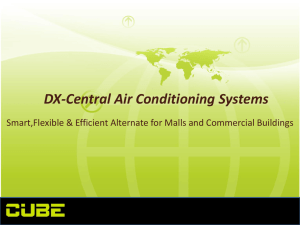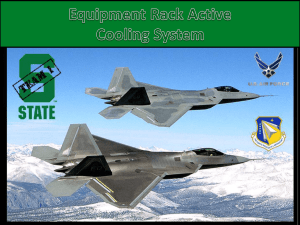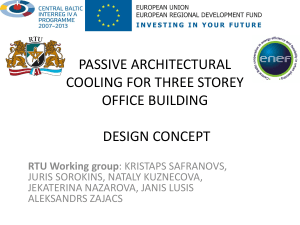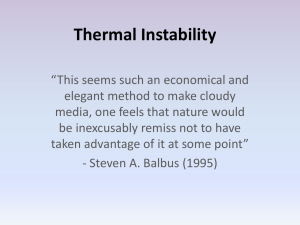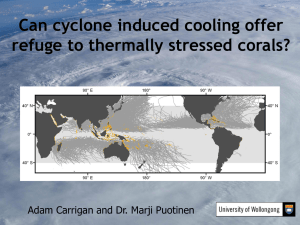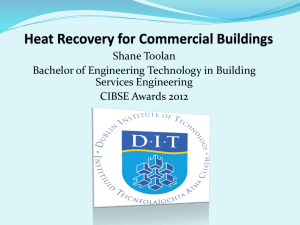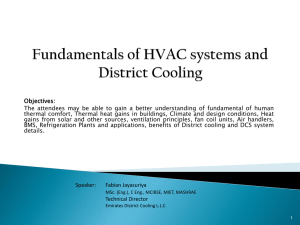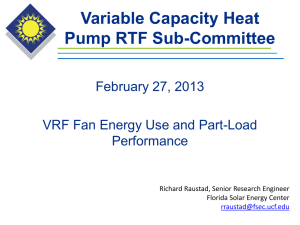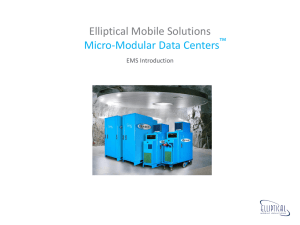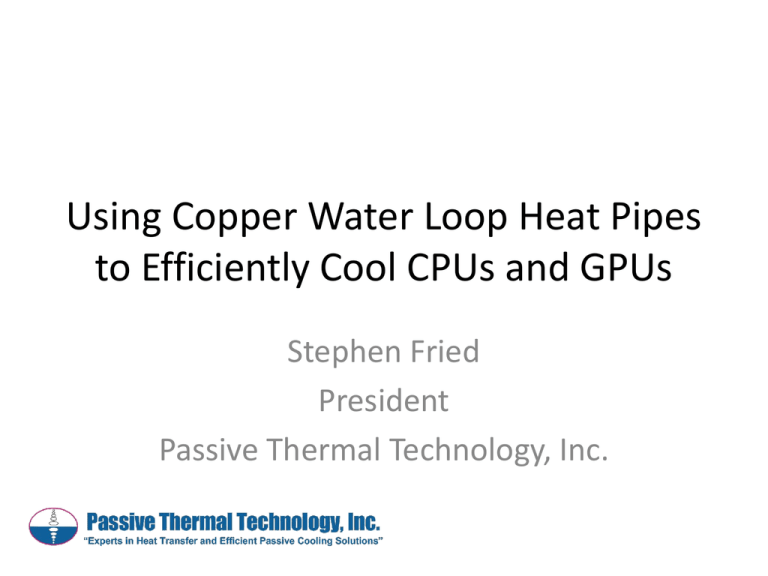
Using Copper Water Loop Heat Pipes
to Efficiently Cool CPUs and GPUs
Stephen Fried
President
Passive Thermal Technology, Inc.
Overview
Unique LHP Technology Features
• Thermal Conductivity – the highest in the industry. Makes efficient
heat transfer possible.
• Passive Cooling Cycle – eliminates the need for fans, blowers in the
first stage of many cooling applications.
• Work in high heat flux situations – makes possible economic
cooling of devices up to 1,000 Watts/cm2.
• Rejection Distance – makes it possible to efficiently move rejected
heat significant distances passively.
• Small size of evaporators, condensers and piping make it ideal for
Data Center Racks and Blades and Avionics.
• Work in both zero G and High G environments making them ideal
for aerospace and space applications.
• Enables Year Round “Free Cooling” in climates as hot as Atlanta,
GA.
Air Cooled Copper Water LHP
•
•
•
•
Air Cooled Condenser
Vapor Line
Liquid Return Line
Evaporator
Copper Water LHP
•
•
•
•
•
Filler Tube Isolation Valve
Condenser Tubing
Vapor Line
Liquid Return Line
Evaporator
LHP Air Cooled 1U Chassis
Water Cooled Cu H2O LHP
Performance vs Water Cooling Temperature
100
Simulator temperature,
о
C
90
80
70
60
50
Tcool=60°C
Tcool=50°C
40
Tcool=40°C
30
Tcool=30°C
20
0
50
100
150
Heat load, W
200
250
300
Ammonia LHP
•
•
•
•
Condenser
Vapor Line
Liquid Return Line
Evaporator
Ammonia Evaporator Design
• Ammonia evaporator
provides excellent heat
exchange at low
temperatures and works
well with most CPUs
running around 60 C.
• Pressure inside LHP runs
between 10 and 20
atmospheres, requiring
cylindrical geometry.
• Latent heat of vaporization
is 1369 Joules/gram. Flow
rate of .1 gram/sec rejects
137 Watts.
Heat Pipe Essentials
• The pumping mechanism is a
capillary wick that lines the
walls of the pipe but is still
sensitive to gravity.
• When the distance between
the condenser and evaporator
grows large or the speed of
the working fluid exceeds a
critical value, the pressure
required to overcome friction
in the wick shuts down the
heat pipe. Copper/water heat
pipes made of ¼" tubing can at
most transmit 40 Watts 4
inches.
Heat Pipe Essentials
• Because of their limitations,
standard heat pipes typically
get used in situations where a
small amount of heat needs to
be carried a small distance.
• The most common use in
computers is in copper finned
heat sinks. A pair of heat pipes
can be used to distribute up to
80 Watts in a heat sink made
of thin copper cooling fins. The
alternative is a heat sink
whose fins are much heavier,
which tends to choke the
cooling flow between fins.
LHP Operation
Outer Wall
Escape Channels
Wick
Vapor Line
Liquid Return Line
Before heat is applied, to the
evaporator outer wall, the wick
is filled with liquid along with
most of the condenser piping.
LHP Operation
Compensation Chamber
Heat
Wick
Vapor Line
Condenser
Liquid Return Line
After heat is applied, the wick is
still filled with liquid.
Vapor escaping from the wick
forces the liquid down through the
condenser and around towards the
compensation chamber.
LHP Operation
After more heat is applied, the
evaporator wick is drying out.
Escaping vapor has now
pushed returning liquid up to
evaporator.
The condenser is now filling
with vapor, removing heat
from the LHP.
LHP Operation
Liquid starts to fill the
compensation chamber as
more heat is applied.
The area in the condenser
available for condensation
increases.
LHP Operation
The compensation chamber
continues to fill with liquid.
More area is now available in
the condenser, improving its
performance.
LHP Operation
The compensation chamber is
now full.
The condenser has maximum
area for vapor condensation.
This increase in condenser
performance results in a
phenomenon called autoregulation, in which the
temperature of the device remains
constant as the heat load
increases.
The Green Market Driver
Loop Heat Pipe “Free Cooling” halves the
energy required to run data centers! The
thermal conductivity of the LHP circuit is
what makes this possible!
Count the motors
1 MW IT load can be
cooled with a pair of
25HP motors in a single
cooling tower.
35KW << 1,000KW!
1U Chassis LHP Condenser Designs
Air Cooled Finned Heat
Exchanger
Water Cold Plate Cooled
Condenser
Forced Water Convection results
in lowest thermal resistance of
any passive heat transfer device
ever invented
Air Cooled LHP’s Using
Large Finned Heat Exchanger
Design employs a large air
cooled condenser. The
finned heat sink was too
large to fit on top of a CPU
in 1U chassis. This heat sink
made it possible to replace
the four 1U fans used to
cool a pair of Opterons with
a single quiet blower.
A Rear mounted blower is
already used to to eliminate
chassis recirculation. Using
the rear mounted blower to
cool a pair of Opterons
eliminates four to eight high
speed fans!
1U Forced Convection
Water Cooled LHP
LHP Performance Cooling Dual Opterons
Ammonia LHP Thermal Resistance Summary
For forced air cooling the minimum value of RΣ was achieved when the heat loads
varied between 50 and 130 W and was equal to 0.33 °C/W, while for forced water
cooling the overall system thermal resistance decreased to just 0.13 °C/W over heat
loads that went from 50 to 320 W. The difference is 61%. A heat rejection on the “cold”
plate gives an intermediate value of thermal resistance at a level of 0.2 °C/W.
The Green Market Driver
Loop Heat Pipe “Free Cooling” halves the
energy required to run data centers! The low
thermal resistance of the LHP circuit is what
makes this possible!
Ammonia LHP Performance Summary
The Opteron CPU’s prescribed maximum operating temperature of 70 °C is called out
in Figure 6. The contact temperatures were measured at different heat loads
employing the same evaporator and different LHP condenser designs. These results
demonstrate convincingly that that in many LHP cooling systems the overall
performance turns out to be condenser limited.
Air Cooled GPU Cu H2O LHP
Cooling Concept
Air Cooled Cu H2O LHP
Designs in Development
Air Cooled Cu H2O LHP
Performance vs Orientation
Simulator Temperature C
100
90
80
Design
Point
70
60
Nominal
50
Sideways High
40
Upside Down
30
Sideways Low
20
0
50
100
150
200
250
Heat Load Watts
300
350
400
Q&A


